|
Scott Whittle, photo-birder supreme. |
My Introduction to Photo-birding
In early June, Denise Ippolito and I visited Trinidad and Tobago thanks to the generosity of the folks at Caligo Ventures. (You can learn more about the trip and about visiting Asa Wright Nature Centre here, here, and below. On the trip we met a young man named Scott Whittle. Scott was very personable and obviously a skilled birder. Never without his binoculars. But strangely for a birder, never without his 400mm lens, 7D, and flash. And never with a tripod.
Scott would photograph birds that seemed a mile away to me. He would photograph birds from the window of our bus. Even when it was moving. He would photograph birds on the way to dinner. And I suspect, on the way to the john. My curiosity aroused, I had several nice talks with Scott as most everything that he did seemed foreign to me. It did not take long for me to get it. Scott’s primary interest was in documenting bird species and refining his ID skills. I asked Scott to write a guest blog post on photo-birding. His efforts are below. Tanks a stack Scott!
Just for the record books, with my big lens and 28 years of experience I did not make a single image of the four species that appear here. Scott’s hand holding, anywhere/anytime approach not only enabled him to create lots of ID and small-in-the-frame habitat type images but to create many superb images as well.
|
Tufted Coquette, male feeding at flower. Trinidad. Image copyright 2012: Scott Whittle. Hand held Canon 400mm f/5.6L and the Canon EOS-7D. Fill flash with the Canon 580 EX Speedlite with a Better Beamer. |
Scott Whittle: Photo-birder
When I first started birding, not so long ago, I came to it as a professional portrait and event photographer with many years of experience. When birding, I started using a camera almost as soon as I started using binoculars. The camera let me document and share what I was seeing and rapidly accelerated my learning process. If I was unsure of an ID, I could check the photo. If I wanted to take a closer look at plumages and behavior, I could do the same. The camera could take a momentary encounter with a bird and extend it for as long as I cared to look. Labeling my photos later on made for a second round of identification challenges that often had me looking at Sibley or other field-guides or asking an expert.
I took the utility of the camera to an extreme in my second year of birding when I did a Big Year in New York State. As a beginner, I knew my word wouldn’t carry much weight; but my photos would. So I set out on a 44,000 mile excursion within the borders of the Empire State over the course of the year, photographing every species and audio-recording those I couldn’t see. At the end of the year I had set a new state record with 350 birds found. And 349 of them were either photographed or recorded. Some of you may enjoy the whole Big Year story on my blog here.
Now I live in Cape May and my rig is even more useful. I find I’m joined by a number of both local experts and visiting birders who have taken up digital cameras in the same way Audubon took up his shotgun over 150 years ago. We are collectors; we are photo-birders.
Like Audubon, I think that many of us strive for art in our images (often much less successfully!), but we also look for opportunities to learn and document what we see. The new breed of affordable and relatively lightweight digital cameras are well-suited to this task. Most photo-birders carry a version of what pro bird photographers might consider a “second” setup…that is, a body like the Canon 7D or Nikon d7000, and one of a handful of fast-focusing, moderate telephotos like the Canon 300mm f/4 L IS, the Nikkor 300mm f/4 VR, the Canon 400mm f/5.6, or the Canon 100-400mm f/5.6. In Cape May, the favored setup (and the one I currently carry) is the Canon 7D with the Canon 400mm f/5.6. We do a lot of birds in flight in Cape May. For your bang-for-the-buck this setup is unrivaled. It is nearly as good at locking focus on small flying birds (read warblers and swallows) as setups that cost three times as much and is capable of pro-level captures with a little careful handling. It’s also light enough to carry all day without objection and the cost of this type of rig makes sense to me considering the plummeting market for selling photographs of birds.
In some ways, what I am doing is the antithesis of “traditional” bird photography. Many professional bird photographers strive for “perfect” plumages (usually adult breeding males), “perfect” perches (ie. a single stick), and “perfect” backgrounds (more often than not, a blurred swatch of color). Several years ago I started calling these images “bird porn”. Just like a Playboy centerfold you have technically perfect, striking images that are a lot of fun (and work) to create. And just like Playboy photos, they are pretty far from the reality of how birds appear in everyday encounters. In contrast, I get as excited by a photo of a molting juvenile or an odd female as I do by one of a striking male…sometimes more so.
Finding images of non-breeding birds can be challenging. I’m co-authouring a book on warbler identification entitled “Warblers in Real Life” with expert photo-birder Tom Stephenson. It will be published this spring by Princeton University Press. I think that he and I would both agree that we’re far more interested in the drab fall birds than the bright spring males. In fact, I often identify these confusing fall plumages as “good” plumages–more challenging, more fun to look at, and more educational. In the process of writing the book we did a lot of searching for images online; when you want, say, an underside shot of a bird, the best pool of photos come from amateurs–photo-birders if you will–because most pros will throw such images out!
From the beginning I’ve been told by birders and photographers alike, “You have to choose one or the other…birding or photography.” Perhaps. Or perhaps not. But I think there’s an important and rapidly growing group that doesn’t feel the need to choose, a group that has found that the camera can both enhance their field experiences and improve their identification skills immensely. In addition, they still enjoy the challenge of capturing birds beautifully. Some of these people are truly expert birders whose birding skills are in the A and A+ categories. Many of them are producing fantastic images, often as a result of always being armed with a camera. It’s an exciting and dynamic group, and I’m happy to count myself in it; we are the photo-birders.
|
Ruby Topaz, Trinidad. Image copyright 2012: Scott Whittle. Hand held Canon 400mm f/5.6L and the Canon EOS-7D. Fill flash with the Canon 580 EX Speedlite with a Better Beamer. |
I saw this species when the group visited the hummingbird paradise that is the home of Theo Ferguson. But never made an image….
|
Bridled Tern, Tobago. Image copyright 2012: Scott Whittle. Hand held Canon 400mm f/5.6L and the Canon EOS-7D. Fill flash with the Canon 580 EX Speedlite with a Better Beamer. |
Scott created this image on the boat trip to Little Tobago Island to try for tropicbirds.
|
Barred Antshrike, Trinidad. Image copyright 2012: Scott Whittle. Hand held Canon 400mm f/5.6L and the Canon EOS-7D. Fill flash with the Canon 580 EX Speedlite with a Better Beamer. |
Scott photographed this species from the veranda at Asa Wright; I never saw it.
Caligo Ventures
If you would like to stay at the avian-rich Asa Wright Nature Centre or visit Trinidad and Tobago you need to get in touch with the great folks at Caligo Ventures. They handle all North American bookings for the charming and legendary lodge located on a 2,000 acre tract of rainforest high in the Arima Valley of the Trinidad’s Northern Range. You can contact them here.

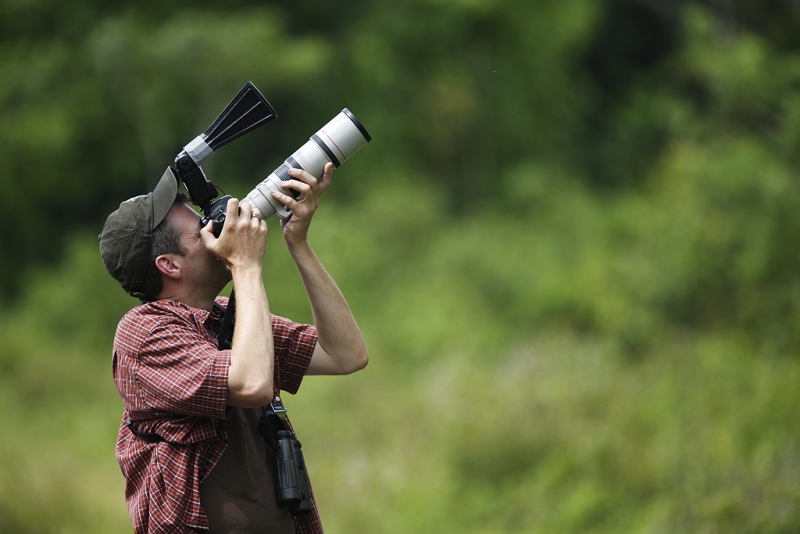
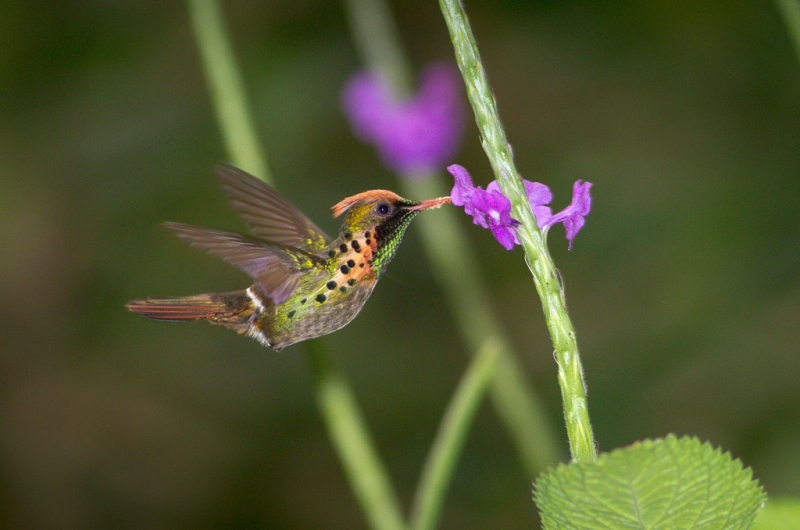
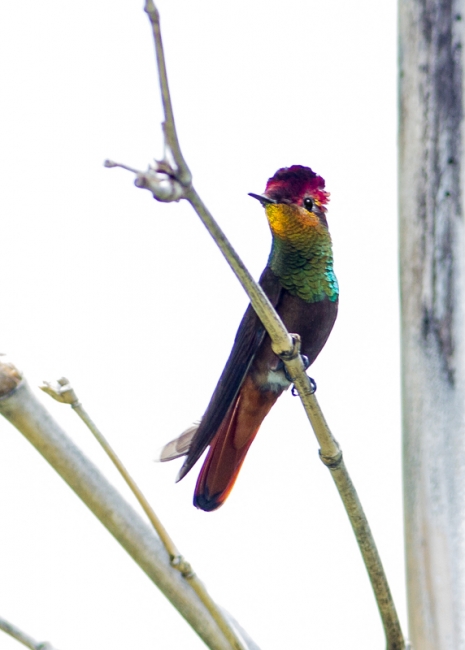
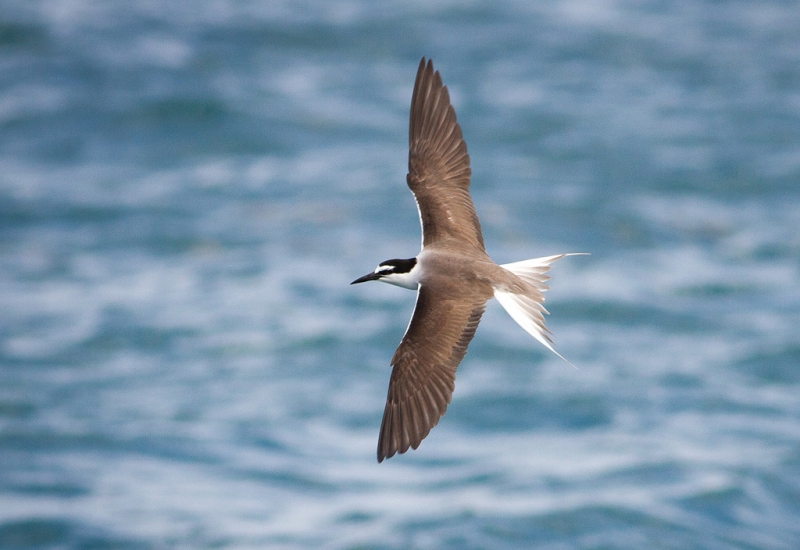
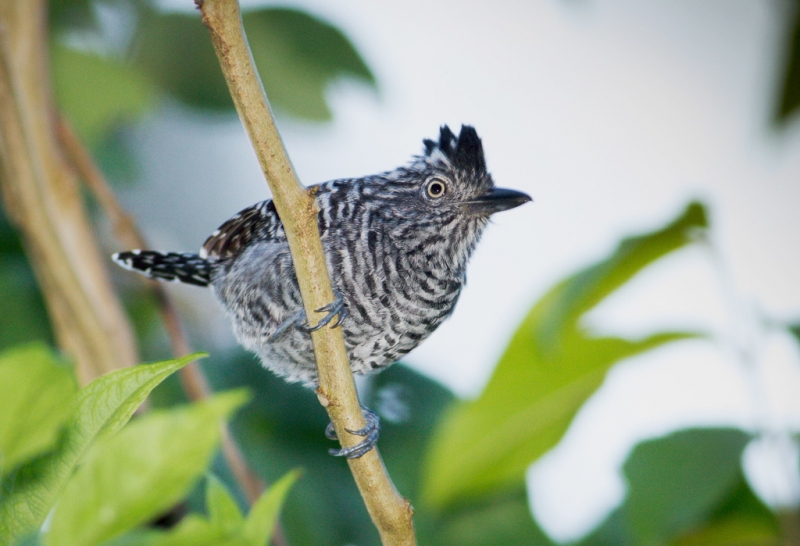
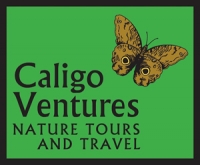













Great post!
Thanks Art I found this post to be very interesting since I’m a photographer who became a birder who uses the 400 5.6 while birding (first on a 30D, now on a 5D2).
I was strictly shooting handheld for the last five years until my left elbow tendinitis got so bad I put down the camera for five months to rest it and just recently started shooting again using a tripod. I always thought the tripod would slow me down too much but it has worked great. I got sharp shots in deep shade (Ovenbird, Swainson’s Thrush) without having to crank up the ISO and I was sold on the tripod. It even works okay with panning and flight shots which is one of my favorite shooting styles (I bought the 400/5.6 on your recommendation for birds in flight).
Thanks for sharing your knowledge through your blog, I enjoy it and I learned a very important technique from reading your book “The Art of Bird Photography”- shooting right angle to the sun.
Dwight in Portland, Oregon
All good but be careful; not right angle to the sun but right down sun angle :).
Yes I meant right ON sun angle. 🙂
It is nice to wake up and know that you are part of a group. I am at the way amateur end of “photo-birder”. I do cary my 7D with 300 and 1.4 teleconverter always…well, maybe not to the john. Scott’s article was great and I will enjoy reading about his New York “big year.” Having met Sandy Komito this spring and being in the middle of his book – should be an interesting comparision. Thanks a heap Artie.
It has always been a point of contention whether I am a birder or a photographer. Thanks to this post I know that there is an actual name for it – photo-birder! I’ve always been striving for that perfect image, but at the same time always ready to capture something I have never seen before or something that is listed as rare. I travel throughout Trinidad (and when time allows, Tobago) handholding, with my 7D, 100-400 and flash, ready for anything! Wonderful images from Scott – his blog is very interesting!
Glad you guys visited Theo Ferguson also – amazing place.
Wonderful post. Love the enthusiasm for birding with photos. I have to use this technique in Florida in winter to identify winter plumage of shore birds. Maybe we can’t always have a fantastic portrait but just need to know what is that little brown bird.
You need a copy of my Shorebirds; Beautiful Beachcombers!
Arthur,
this is my first visit to your forum, and I want to say that you provide a wonderful learning experience for your participants, and your sharing of knowledge about field photography is both generous and valuable. Keep up the fine work, my friend.
Thanks Kev. Hope that you and Dale are well. Scott is a very nice young man.
Nice to know there are others using the same “photo-birding” approach. Ironically (or fortunately), I got my inspiration and basic training for picture taking from Art, and have been using the 7D and 400 f/5.6L successfully for more than a year now. I love what the “pros” produce, but I started a blog recently about my birding adventures and my readers seem to be quite pleased with my results. Thank you–Artie and Scott.
YAW Phil and thank you. Do understand that any competent photographer “pro” or not can produce great images with a 400 f/5.6 L and an EOS-7D….. A good image is a good image. Period :).
As you, Artie, have proved many times.
🙂
Artie – really enjoyed this article. The 7D gives a real advantage for using the 400 f/5.6 (equivalent to 666mm with crop factor, if my arithmetic is correct. I recently bought a 5D III and am trying to determine which lens to buy to allow a similar hand held focal length as Scott. 300mm with 2X TC? I already own the 70-200 2.8 II IS.
Thanks
Back to fourth grade math :). 400 X 1.6 = 640. 300 with 5D III is 600. 7D wins for pixels on the subject but 5D III wins for image quality and AF system. Do you only hand hold? Do you have our 5D III User’s Guide? (See item one here.)
Artie thanks for reply. I have no telephoto yet, hence, don’t hand hold or use tripod yet. Just trying to determine which is best path forward. Ordered the guide yesterday but haven’t received email with attachment yet.
Thanks for your order. Jim’s Mom died and he is gone for the week. I will e-mail you the current PDF now.
So for a new birder, using the 5DIII, do you suggest the 500mm lens for handhold and tripod?
Ah, you beat me to the punch…. The new 500 f/4L IS II lens is light enough for some folks to hand hold. But it does great on a tripod too with the 1.4X and the 2X TCs (the latter only for folks using a body like the Mark IV that AFs to f/8.) The new 300 is great with both TCs but does not give you the reach of the 500…. Once you make up your mind, please e-mail for the correct B&H link. Thanks!
See BAA Bulletin #415 for a few examples of hand held flight images with the new 500mm.
A most interesting post, especially for those of us who are neither weight-lifters or millionaires and thus can’t use ” pro” or ” bird porn” level equipment.
Would like to hear more about how to freeze motion with daytime flash and avoid ” ghosting” in images, given available synch speeds, and also whether or not a setup like Canon 300 mm F4 with a 1.4 x extender would, by providing image stabilization, be handier than the non-IS 400 mm f 5.6 ( sharp though it is.)
300 mm F 2.8 with new extenders would seem ideal but 7 or 8 k is a bit much for those who are not members of the one percent.
Would also like to hear Scott’s approach to birds in flight—an always difficult subject.
For the freeze motion question, search for the quasi flash as main light post of a few weeks ago. Avoiding ghosting when you are close to the correct ambient exposure can be done only if nothing is moving–gear or subject. The 00 f/4L IS/1.4X TC is a great set-up for folks who need IS. Sharpness levels between the two rigs are very comparable and depend much more on the skill of the photographer than upon the glass. Scott’s approach to BIF is similar to mine. Find the subject, track it, and push the button :). Oh, and practice, practice, practice.
Bird porn! Ha! My preferred nomenclature is “avian erotica” but you say toe-may-toe…
Thanks, Artie and Scott. A very nice post. I think my approach is somewhere in between Scott’s and “bird photographer’s” approaches, and I also like the 7D and 400 f/5.6L. Cost is a factor, of course. My bottom line is that I enjoy watching and photographing birds; if others like my results, so much the better. I can’t help sharing a recent experience; on Nantucket, riding bicycles with my wife; a swallow-tail kite flew right over my head and around us, and almost any camera would have allowed great photos, but I wasn’t willing to risk a couple of thousand dollars’ worth of camera equipment in the bike’s basket, so I was unarmed…But a thrill to see anyway.
Thanks for the thumbs-up on the Canon 7D and Scott’s blog. It is nice knowing that they are carried by pros. I was begining to think that Canon pros only carried the full-frame Canon cameras. Nice to know that the eye is as important as the equipment. I have a new appreciation for my 7D…:)